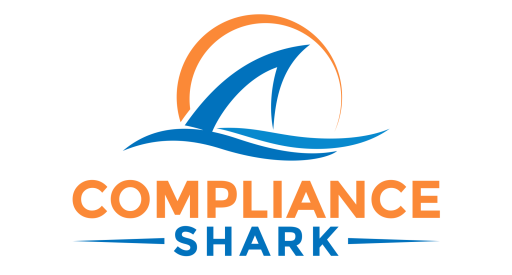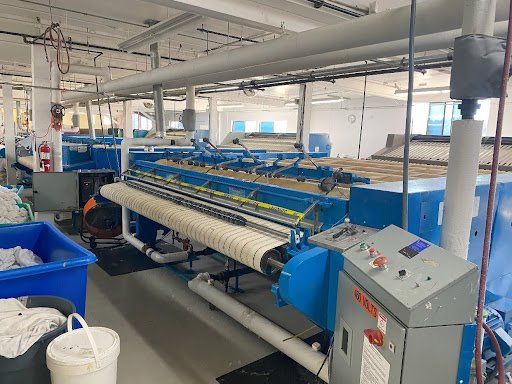Healthcare textiles - Beyond Moisture: A Deep Dive into the Significance of Optimal Drying
In our world of healthcare laundry, we often say, "Getting healthcare textiles clean is a straightforward task, but the true test lies in ensuring they stay clean right up to the moment they reach the patient." We have focused our first five blog posts on identifying and correcting some common sources of linen contamination including dirty air, unclean hands, soiled linen carts, inadequate tunnel washer processes, and contaminated surfaces. While these are all dangerous and prevalent, now let’s delve into an invisible threat whose consequences have been deadly! That is the threat of inadequately dried healthcare textiles.
This blog post will delve into three key facets of healthcare textile drying, addressing the following critical aspects:
The various methods employed in drying healthcare textiles.
The potential hazards associated with inadequately dried healthcare textiles.
Strategies to help guarantee the optimal drying of healthcare textiles
At a high level, most clean healthcare textiles are dried in one of 5 ways:
Tumble Drying - Tumble dryers are commonly used in healthcare facilities for quick and efficient drying. They use hot air circulation to remove moisture from textiles. Commercial-grade dryers with advanced features, such as moisture sensors, are often employed in large-scale healthcare laundry facilities to ensure thorough drying. Tumble dryers can be standalone or part of a larger tunnel washing system. Please see figure 1.
Figure 1: Tunnel system dryers
2. Air Drying - Certain healthcare textiles undergo a natural drying process by suspending them on lines or racks, a method known for its environmental friendliness. While this approach aligns with eco-conscious practices, it may extend drying times compared to machine drying. Air drying is commonly reserved for delicate healthcare textiles like slings, restraints, or positioner mattresses, ensuring a gentle treatment of sensitive materials.
3. Steam Drying - In some settings, steam drying systems are utilized to remove moisture from textiles. Steam can be an effective and energy-efficient method. Often steam drying tunnels are used in garment drying to provide a professional finish in addition to drying. Please see figure 3:
4. Flatwork Ironing - Flatwork ironers are high capacity systems used for certain types of flatwork healthcare textiles including sheets and pillowcases, providing both drying and pressing in a single step. Please see figure 2.
5. Steam Pressing – Steam presses are used to finish and dry certain specialty healthcare textiles including cubicle curtains and lab coats.
Figure 2: Flatwork Ironers
Figure 3: Steam Tunnel for Garment Finishing
Achieving precision in the drying process demands meticulous attention to detail across all methods. Factors such as the specific textile type, initial moisture content, load size (particularly for tumblers), drying device temperature, speed (for flatwork ironers), desired finished product temperature, and drying time all play crucial roles. Any misalignment or oversight in addressing these variables can lead to undesirable outcomes, ranging from finished textiles retaining excessive moisture to the risk of over-drying and ruining the end product. The consequences not only entail significant expenses but, in the case of excessive moisture, can potentially pose severe risks, underscoring the critical importance of precision in the drying process.
The consequences of over dying include damaged linen that must be replaced or scratchy/uncomfortable linen for patients. Also, over drying means you are unnecessarily increasing your environmental footprint by using too much heat (natural gas), excessive equipment wear (electricity), and shortening the life of your linen. These outcomes are expensive to a healthcare system and should be avoided at all costs.
The results of under drying can be far more severe. As we discussed earlier, most pathogens that cause Healthcare Associated Infections (HAI’s) love an environment rich in heat, moisture, and nutrients such as those found on healthcare textiles. Moist healthcare textiles can potentially support the growth of various pathogens, including bacteria, fungi, and, to a lesser extent, viruses. The ability of pathogens to grow on textiles depends on factors such as the type of pathogen, the level of moisture, temperature, and the presence of nutrients. Damp textiles are prone to developing unpleasant odors and mildew. This not only affects the quality of the textiles but can also contribute to an unsanitary healthcare environment. Here is a small subset of pathogens that may thrive on healthcare textiles in warm moist conditions:
Bacteria:
Clostridium difficile (C. difficile): This bacterium can cause colitis and other gastrointestinal issues. It produces spores that are resistant to many disinfectants and can persist in the environment. C. difficile infections are a common type of healthcare-associated infection. They often occur in healthcare facilities such as hospitals and long-term care settings.
Staphylococcus aureus: This bacterium can cause skin infections and is associated with healthcare-associated infections. Staph is frequently found in healthcare settings.
Pseudomonas aeruginosa: This bacterium known for its ability to thrive in moist environments can cause infections, especially in immunocompromised individuals.
Enterococcus faecalis: A bacterium commonly found in the gastrointestinal tract, it can cause infections, particularly in healthcare settings.
Fungi:
Mucormycosis: A serious fungal infection caused by molds belonging to the order Mucorales. These molds are commonly found in the environment, including soil and decaying organic matter. Mucormycosis outbreaks have been linked to contaminated linen. Please see Many hospital linens contaminated with mold, study finds (beckershospitalreview.com).
Candida albicans: A fungus that can cause candidiasis, commonly known as a yeast infection. It may grow in moist conditions on textiles.
Aspergillus spp.: Certain species of Aspergillus molds can grow in damp environments, and exposure can lead to respiratory issues.
Figure 4: Linen Fungus Blamed in Hospital Deaths
Viruses:
Adenovirus: While viruses generally do not survive as well on surfaces as bacteria and fungi, some viruses may persist for a limited time in a moist environment.
Ensuring Healthcare Textile are Optimally Dried
Having explored the drying process of healthcare textiles and understanding the repercussions of inadequate drying, let's shift our attention to mastering the art of optimal textile drying in healthcare. Achieving the ideal drying outcome involves concentrating on the following key areas:
1.Follow Textile Manufacturer Guidelines
Adhere to the manufacturer's guidelines for laundering and drying specific types of healthcare textiles. These guidelines provide information on recommended temperatures, drying times, and care instructions.
2. Sort Textiles Appropriately
Prior to entering the drying phase, it is imperative to categorize healthcare textiles based on fabric type, color, and soil level. This not only safeguards against potential damage but also guarantees an even and efficient drying process. Of particular importance, albeit challenging, is the meticulous separation of textiles with high synthetic content from those with high cotton content. The divergent drying characteristics of these materials demand careful handling, as high synthetic textiles dry at a faster rate than their cotton counterparts. Failure to segregate them may lead to either over-drying of synthetics or under-drying of cotton, a common occurrence observed in items like scrubs and patient gowns where variations in synthetic/cotton ratios are prevalent.
3. Control Load Sizes
For tumble dryers, it is critical that load sizes are tightly controlled by weight. Heavier loads will require more dry time. Lighter loads will require less. If loads are weighed appropriately prior to the washer then load sizes should be appropriate for the dryers.
4. Invest in Proper Drying Equipment
Invest in commercial-grade drying equipment designed for healthcare laundry. These machines often have features such as moisture sensors and programmable settings to achieve optimal drying conditions. Industrial flatwork ironers will often have useful features such as temperature controls, vacuum systems to assist in moisture removal, and variable roll speeds.
5. Monitor Drying Times
Set appropriate drying times based on the type of textile and load size. Overdying can lead to fabric damage, while under drying may leave textiles damp, promoting microbial growth.
6. Perform Regular Equipment Maintenance and Monitoring
Schedule regular maintenance for drying equipment to ensure it functions efficiently. Malfunctioning equipment may result in uneven drying or inadequate moisture removal. For tumble dryers, clean and check lint filters frequently. Clogged lint filters will impact drying efficiency and can become a fire hazard. Ensure blower motors and fans are cleaned of lint regularly. Lint in these parts will cause blowers to run inefficiently impacting airflow, drying as well as motor life. Check gas pressures and air pressures frequently. Check flame composition regularly. Incorrect gas/air mixtures will impact dryer efficiency and can cause a fire hazard.
7. Be Meticulous About Equipment Cleaning
It would not be an understatement to say that 80% of drying issues are a result of poor equipment hygiene. Healthcare laundries generate copious amounts of lint and dust that wreak havoc on equipment and performance. Lint and dust accumulation is not only a fire hazard. It also negatively impacts motors, blowers, vacuums, rollers, bearings, and more. Develop, document, and enforce an uncompromising equipment hygiene program.
8. Measure, Monitor, and Tune Drying Results
Develop a rigorous process monitoring program around drying equipment and finished textiles. As part of this program, most importantly, operators should check finished product at least hourly to ensure textiles are dried satisfactorily. If textiles are under dried or overdried, communicate to maintenance and management immediately. Check flatwork ironer chest temperatures frequently to ensure they are within acceptable ranges. Check flatwork ironers speeds. If ironer speeds and ironer temperatures are within range but finished textiles are still damp, there may be too much moisture in the incoming flat goods. Check the upstream washer extraction process or consider conditioning flat goods for a few minutes prior to the ironer. Check dryer inlet and outlet temperatures frequently to ensure they are within proper ranges.
Figure 5: Feeding Pillowcases into Flatwork Ironer
In conclusion, the intricate landscape of healthcare textile drying demands meticulous attention and a comprehensive strategy to mitigate potential risks and uphold patient safety. From the initial emphasis on cleaning healthcare textiles to the nuanced challenges posed by the drying process, our exploration has unraveled the unseen threats that lurk in inadequately dried linens. Understanding the diverse drying methods, potential consequences of overdrying and underdrying, and the spectrum of pathogens thriving in moist conditions, we pivot toward the proactive measures required for optimal drying. By adhering to manufacturer guidelines, sorting textiles judiciously, controlling load sizes, investing in proper equipment, monitoring drying times, conducting regular maintenance, and prioritizing equipment hygiene, healthcare facilities can master the art of optimal textile drying. This holistic approach not only ensures the efficiency of the drying process but also contributes to maintaining excellent hygiene standards, ultimately safeguarding the well-being of patients and reinforcing the critical role of healthcare textiles in the broader landscape of patient care.






